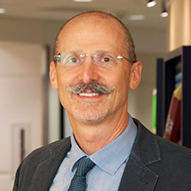Dallas
214-456-2240
Fax: 214-456-8881
Plano
469-497-2501
Fax: 469-497-2507
Request an Appointment with codes: Plastics and Craniofacial Surgery
214-456-2240
Fax: 214-456-8881
469-497-2501
Fax: 469-497-2507
Request an Appointment with codes: Plastics and Craniofacial Surgery
There are various different types of nasal reconstruction. These can be considered in terms of reconstruction to the skin only and reconstruction to the structural framework of the nose, which is then covered on top by skin and covered underneath by lining.
Reconstruction of the structural framework of the nose is usually achieved by using bone or cartilage from elsewhere in the body and using it to reconstruct the framework of the nose. Bone is sometimes necessary to reconstruct the bridge of the nose if it has collapsed, and cartilage, often from an ear, a rib or the septum, which is a sheet of cartilage lying between the two sides of the nose is used to reconstruct the tip of the nose and around the nostrils.
The skin of the nose can be reconstructed either by using a skin graft, a local/regional flap or a free flap. A skin graft is a thin piece of skin, which is removed from elsewhere on the body and sutured in place on the nose. This can be effective at reconstructing defects but it can be unpredictable in terms of the color and thickness of the area of skin reconstructed so tends not to be used for anything other than small defects in children. It can be combined with cartilage as a composite graft, which can be useful for reconstructing part of the edge of a nostril.
A local/regional flap is a block of tissue covered by skin, which remains attached to the body at one end, keeping it alive. Commonly used local/regional flaps in adult nasal reconstruction use loose skin in the bridge of the nose, between the eyebrows or on the cheek next to the nose to reconstruct the nose. The most predictable and versatile flap used to reconstruct a child’s nose is the forehead flap, in which part of the forehead skin is used to reconstruct the nose. This technique is effective at reconstructing even the largest defect and can give a good match to the uninjured side, but does require at least two and often three operations, spaced several weeks apart. It does leave a vertical scar on the forehead, but this generally heals very well in children. The forehead flap gives a good color match for the nose and can be sculpted to give a good shape and thickness during the multiple operations.
A free flap is a block of tissue together with blood vessels that keep it alive, which are completely detached from the body and then the blood vessels are connected to blood vessels near the nose to keep the tissue alive. It is not commonly used for nasal reconstruction but can be a good choice in certain circumstances.
The internal lining of the nose is either reconstructed using part of the remaining lining inside the nose or using skin by one of the techniques for reconstructing skin discussed above.
It is important that the patient and their family understand the entire reconstruction and are involved with planning and timing of the reconstruction in order to obtain the best outcome from nasal reconstruction. These are often operations that require several stages at set time intervals and that have very obvious facial deformities until the last stage.
At Children’s Health℠, our team of plastic surgeons are experts in nasal reconstruction for children. In addition, our developmental psychologists are key members of the team by not only preparing children and their families for this procedure, but also helping to provide services, such as arranging schooling at home during the reconstructive process.

